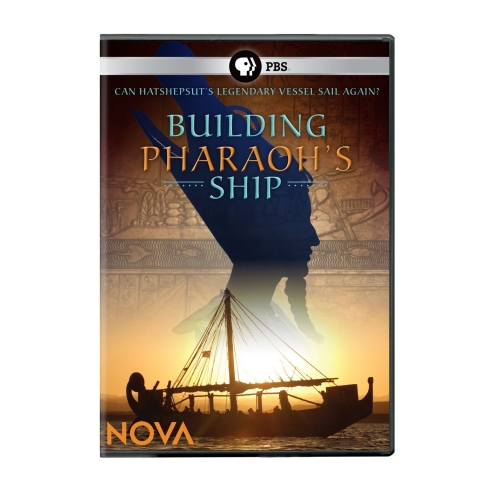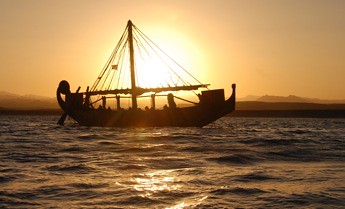Flippant Remarks about “Building Pharaoh’s Ship”
 Because of my rather fiery 1980s (post 1960s) formal, education about my African heritage, people like me cringe before even thinking about watching mass-audience documentaries about Africa in general and ancient Egypt in particular. When viewing documentaries about ancient Egypt, like Building Pharaoh’s Ship, the next generation of young fiery students, should consider (and research) these assertions:
Because of my rather fiery 1980s (post 1960s) formal, education about my African heritage, people like me cringe before even thinking about watching mass-audience documentaries about Africa in general and ancient Egypt in particular. When viewing documentaries about ancient Egypt, like Building Pharaoh’s Ship, the next generation of young fiery students, should consider (and research) these assertions:
-
“Objectivity” is more of an ethnic aesthetic than actual scientific objectivity.
-
European and Arab Egyptologists devote their entire lives to the study of African people. These people are funded not by Africans but by organizations that often have less than respectful historical relationships with indigenous African peoples. There is a colonial past—and religious fervor—influencing even the most “objective” researcher.
-
The tourists that visit Egypt and pour millions into the coffers of the Arab government every year would either be confused or offended to hear about the African heritage of Nile Valley civilizations. It would serve no earthy, materialistic purpose to enter into this “discussion” from the 1970s. Don’t waste your time on people just trying to pay the rent.
-
Study carefully how America went wild over all things ancient Egyptian in the 1930s what with the Art Deco aesthetic. Review the record of how contemporary Americans collectively show their respect for ancient cultures—including the Greek culture—and consider why you should not be concerned about how pop-culture views your past. Do you see the American respect in a headline like, “Greece’s Math Problem”? The only tactical reason why you should be concerned about pop culture influence is because of its deleterious effect on the consciousness of children of all skin colors.
-
During the dramatic reenactments that often appear in these documentaries, you can often tell where the funding is coming from: American money will settle upon the lightest-complexion brunette actors while a strong Arab/local Egyptian influence will use brown skinned handsome folk with nice narrow noses. I am not suggesting that the producers of these programs literally say things like, “Use no actor that could be mistaken for a black African—unless the audience knows it is a servant of foreign origin.” But these people would like to be “conventional” and “reasonable”—and more subtlety I daresay they would like to “prove” that they are not going to be pressured by “extremists” and would rather have the respect of “tradition.” Without even researching, my flippant assertion is that Building Pharaoh’s Ship is funded by Americans—I daresay some of them might have run into a debate with Leonard Jeffries back in day and lost. They might have lost a battle fair and square but they intend to win a missionary war for the next generation of hearts and minds.
-
It is mentally healthy for the African-descended to divide ancient Egypt into two time periods: toward the Old Kingdom and after the Old Kingdom. Whenever you read anything about ancient Egypt—even things by self-described “black” people—take the time to note what period we are talking about here. What happened after the living memory of the Old Kingdom is not to be taken lightly (no pun intended)—rather it is healthier to consider it as the beginning of end of the world, toward an apocalypse literally of Biblical proportions. You want to know what it’s like to live in a science-fiction, post-apocalyptic future? Just wake up and know your African history: apocalypse now.
 Now that my “uncomfortable” general assertions are laid out quite pungently, let’s make a new list of bullets about the film itself:
Now that my “uncomfortable” general assertions are laid out quite pungently, let’s make a new list of bullets about the film itself: -
In spite of the white Egyptian re-enactors, this documentary had to document that the post Old Kingdom leaders still regarded the land of “Punt” as “land of the god” but when you watch even casually how “traditional” Egyptologists, hard scientists and European art historians view the heart of Africa this “god”-thing can be quite confusing for the young, intelligent student.
-
According to the documentary, the ancient Egyptians used “a lot” of incense. This incense came from the interior of Africa. By the way, deity is represented by incense smoke—so it make even more sense to me why we have “Punt” as “land of the god.” And, by the way, this smoky idea translated into hands of Europeans explains in part why western scientists erroneously searched for “Luminiferous aether” for so many years in the study of physics.
-
There were several remarks—almost complaints—about the ship-building techniques of the ancient Egyptians. These ancient people did not use a skeletal frame to build a ship, rather they used wood-sculpture techniques for the sea worthy vessels and essentially basket weaving (on a massive scale) for the river vessels. These building techniques make perfect sense to me because I’m seeing the ancient Egyptians as African people. Africans weave baskets and sculpt wood—no “mystery” here.
